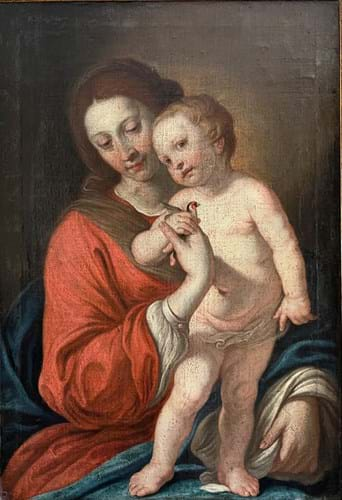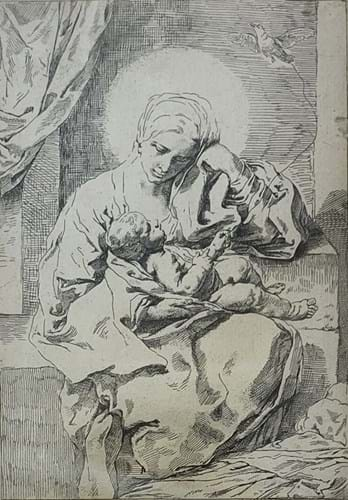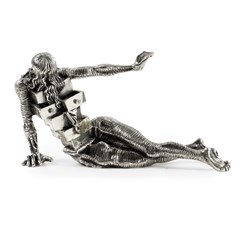Getting into Old Masters: Madonna and Child pictures
17 January 2023 This week we are returning to our short series about understanding and buying Old Master works of art.
In this 17th century painting the Madonna and Child are surrounded by a garland of flowers painted by Jan Brueghel the Younger. The artist was the son of Jan Brueghel I or ‘Velvet Brueghel’ who specialised in such flower garlands, and although his son followed in his footsteps, though his work has distinctive characteristics. The figures are by an anonymous Flemish artist. The picture is oil on copper, giving the colours a luminous quality, and it goes under the hammer on February 7-8 at Carlo Bonte Auctions in Bruges with an estimate of £25,000-35,000.
Typically defined as the work of top artists working in Europe before 1800, Old Master represents one of the most traditional collecting fields. The field can seem intimidating but don’t be put off.
Walk into a gallery of Medieval or Renaissance art and you might find yourself faced with rows of similar-looking mothers and (perhaps slightly strange-looking) babies. Within the category of religious art, Madonna and Child pictures represent one of the most common subcategories so it’s worth understanding a little about them.
Despite looking quite similar at a glance, they can have subtle symbolism and provide tender depictions of a mother and her child.
Pictures of Mary with young Jesus date back to ancient Rome. These scenes reached the height of their popularity in the Middle Ages and Renaissance. There are a number of different ‘types’ such as the Madonna enthroned, the adoring Madonna, and the nursing Madonna. They are often attended by angels or saints, but equally appear along.
Look out for key symbols, such as the finch, which was thought to eat thorns and so was associated with Jesus’ crown of thorns at the time of his crucifixion (even these images of him as a young child allude to his death). Often he is shown with a coral necklace. While this can be seen as symbolic of his blood, it was common for children in the Middle Ages to wear such jewellery. Coral was thought to have protective powers – but was also good for teething.
So there can be more to these pictures than first meets the eye. Here is an example of some going under the hammer on thesaleroom.com.

This large Flemish Madonna and Child from the 16th century shows the pair embracing in a landscape with roses, a stream and a mountain in the background. Roses were associated with Mary, white roses symbolising her purity. The image is unusual for having the mother in a red mantle over a blue gown, an inverse of the tradition. The picture is estimated at €6000-10,000 at Goldfield of Weiswampach on January 29.

In this 17th century Italian painting, Mary has her hand to her chest in a gesture that is half natural and half adoration – in many scenes she watches over the sleeping child with arms crossed over her chest. In Flanders Auctions’ sale of January 25 in Wingene the oil on canvas has an estimate of £400-600.

Another Flemish picture, this time from the 17th or 18th century shows Jesus holding a goldfinch, one of the classic symbolic elements mentioned above. Auktionhaus Mars, which offers it on February 4 with an opening price of €350, notes that the composition and figures bear a resemblance to similar pictures by Rubens and van Dyck.

To conclude, another image associated with a named artist. Swan Fine Art near High Wycombe offers this engraving after a work by 17th century Veronese artist Simone Cantarini. Framed and glazed it has an estimate of £30-50.



